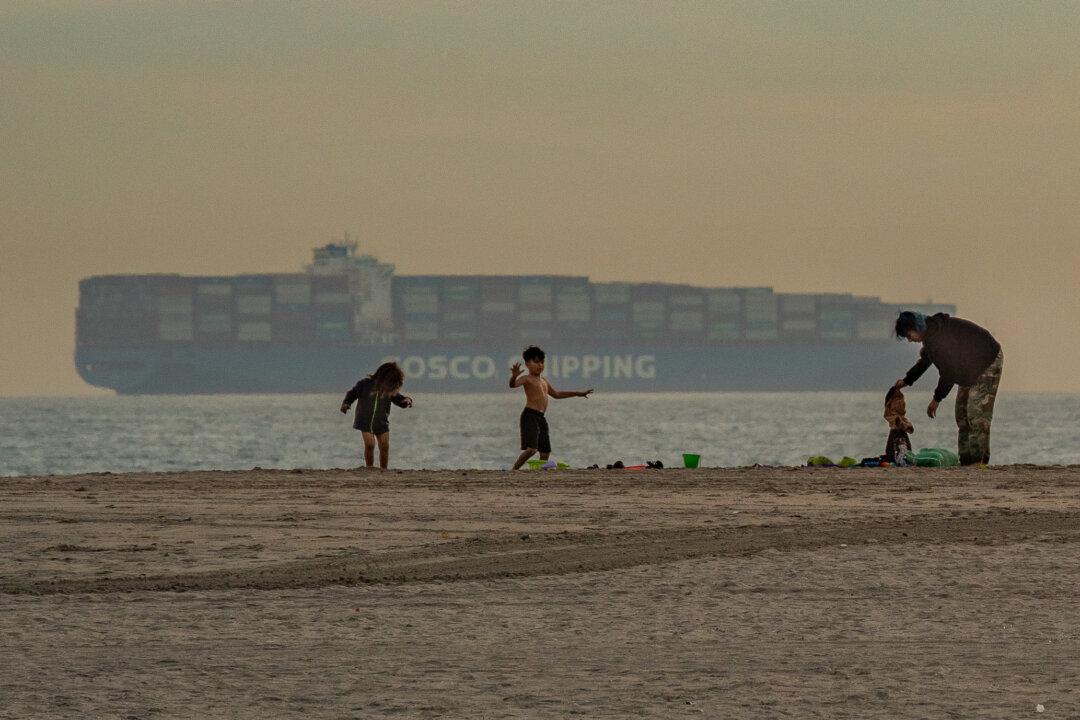The backup of cargo ships waiting to deliver goods to the Port of Los Angeles last year caused a spike in greenhouse gas emissions, a new report shows.
In 2021, the port recorded a 39-percent increase in greenhouse gases, including carbon dioxide, methane, nitrous oxide, and fluorinated gases, which trap heat in the atmosphere.





